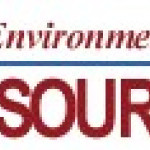- Branche: Government
- Number of terms: 3992
- Number of blossaries: 2
- Company Profile:
Devices placed on vehicles to capture gasoline vapor during refueling and then route the vapors to the engine when the vehicle is started so that they can be efficiently burned.
Industry:Pollution control
Devices that are incorporated into the computer systems of new motor vehicles to monitor components and systems that affect emissions when malfunctioning. If a problem is detected, the OBD system illuminates a warning lamp on the vehicle instrument panel to alert the driver. This warning lamp typically contains the phrase Check Engine or Service Engine Soon. The system will also store important information about the detected malfunction so that a repair technician can accurately find and fix the problem. For more information, please go to our on-board diagnostics website.
Industry:Pollution control
Degradation of air quality resulting from unwanted chemicals or other materials occurring in the air. (See also air pollutants. )
Industry:Pollution control
Control techniques defined in U. S. EPA guidelines for limiting emissions from existing sources in nonattainment areas. RACTs are adopted and implemented by states. For more information, please go to our RACT website.
Industry:Pollution control
Chemicals such as non-methane hydrocarbons and oxides of nitrogen, occurring either naturally or as a result of human activities, which contribute to the formation of ozone, a major component of smog.
Industry:Pollution control
Citizens, environmentalists, businesses, and government representatives that have a stake or concern about how air quality is managed.
Industry:Pollution control
Any place or object from which air pollutants are released. Sources that are fixed in space are stationary sources and sources that move are mobile sources.
Industry:Pollution control
